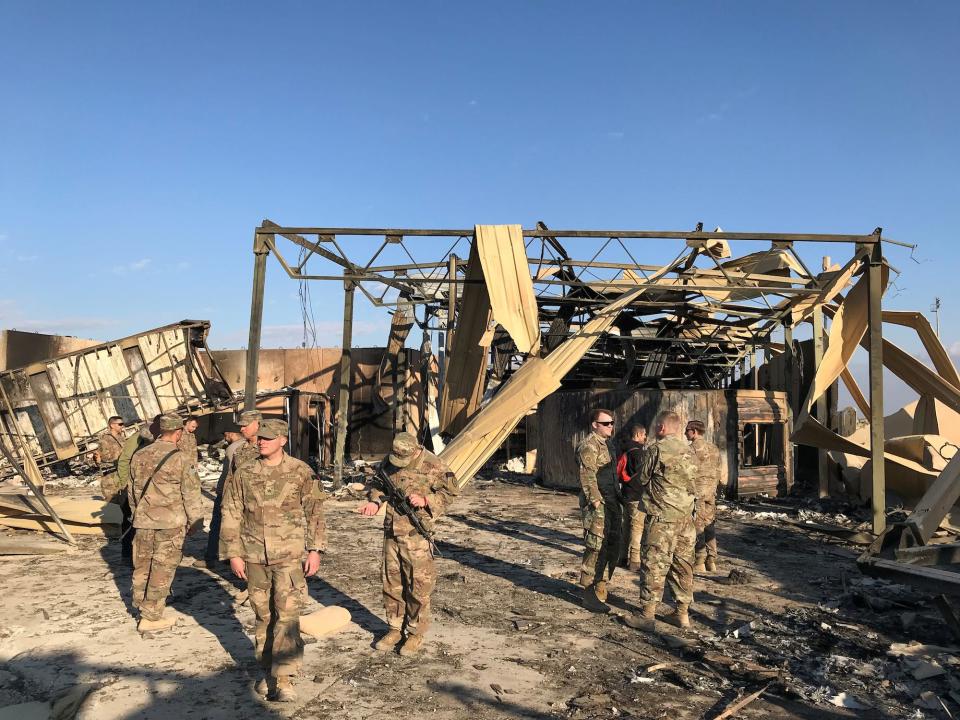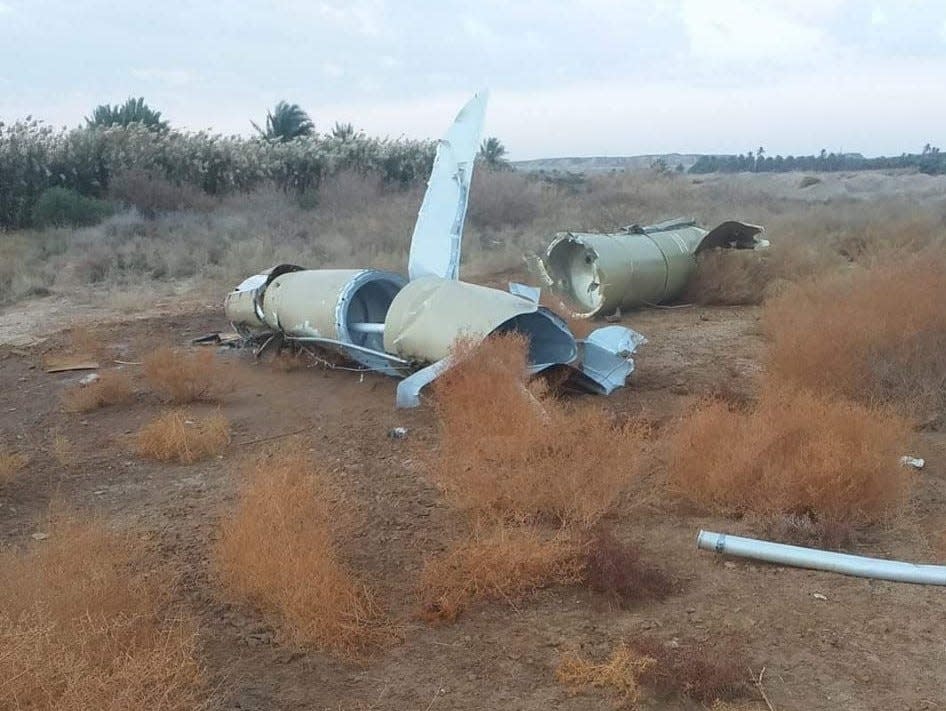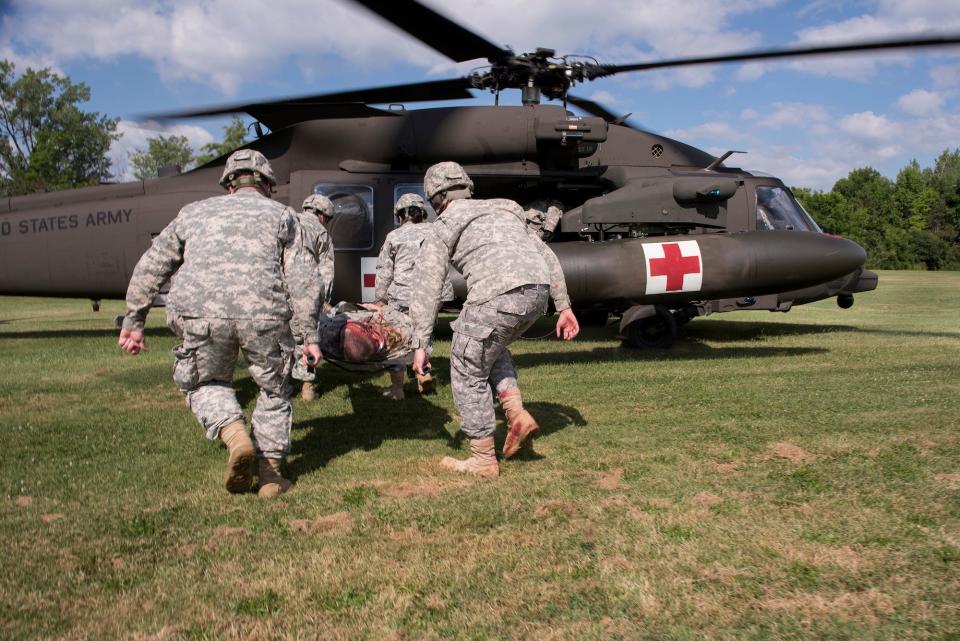A massive Iranian missile attack on a US base offered a glimpse of the long-lasting injuries US troops will face in a war with Russia or China
In January 2020, Iran fired nearly a dozen ballistic missiles at an Iraqi base housing US troops.
No US personnel were killed, but more than 100 were later diagnosed with traumatic brain injuries.
Those injuries were a likely preview of US casualties in a future war, medical researchers say.
An unprecedented Iranian ballistic-missile attack in Iraq in January 2020 offered a worrying glimpse of the less visible but long-lasting injuries US troops will likely sustain in future wars.
Five days after the assassination of Iranian Gen. Qassem Soleimani in a US drone attack in Baghdad, Iran made good on its threats to retaliate by launching 11 ballistic missiles at Al Asad air base on January 8, 2020.
The hundreds of US troops at the base experienced what has been described as "the largest ballistic attack against Americans in history."
The troops only received a few hours of warning, and the base had no air defenses capable of intercepting the missiles. As the 11 missiles, each carrying 1,000- to 2,000-pound warheads, rained down, some US soldiers were blown out of their positions in guard towers by the blasts. Other US troops huddled in bunkers built during the reign of Saddam Hussein.
Yet no US soldier was killed or suffered severe physical injuries. Their survival was described as "a miracle of God."

But 109 American personnel at Al Asad were ultimately diagnosed with traumatic brain injuries, or TBIs, and will likely have recurring headaches and PTSD-related symptoms for the rest of their lives. Several of these troops were awarded Purple Hearts in recognition of their injuries.
US Army Maj. Robert Hales was the highest-ranking medical doctor on the base during the attack. In an interview with 60 Minutes over a year later, he said there is limited understanding of brain traumas such an attack can cause.
"There hasn't been a lot of studies with this level of percussion wave, with the overpressure and the negative pressure that immediately follows being exposed to this, over and over again," he said. "Just because this missile attack was so unique, as it never has happened in history that a ground force was exposed to 11 theatre ballistic missiles."
Unfortunately, according to a report published in August by the Journal of the American College of Surgeons, TBIs will only become "more prevalent" among US troops in conflicts against a near-peer adversary, a term that refers to forces with capabilities similar to those of the US military.

In its post-2001 wars, the US found itself fighting insurgents and terrorist groups who used unconventional tactics to counter the US's military and technological superiority. US dominance of the air, ground, and sea "assured relative freedom of movement for medical evacuation" of wounded US troops, the report says.
Most of the 60,000 casualties, including 7,076 deaths, that the US suffered in those wars were caused by small-arms fire and less sophisticated weapons like improvised explosive devices, mortars, and small rockets. As the fighting in Ukraine has shown, a war against a near-peer adversary would almost certainly involve heavier and longer-range weaponry.
Some 70% of Ukraine's combat casualties are from Russian artillery and rocket barrages, which cause "multiple high-velocity penetrating injuries, barotrauma, and blunt injuries from being thrown during the explosion" and, of course, TBIs, according to the report, which notes that attacks using IEDs "affected fewer patients, in general, and caused less severe injury."
The report highlights the Al Asad attack as a "rare modern instance" of US troops facing near-peer adversary-level weapons and suffering significant numbers of debilitating TBIs as a result.

Moreover, it would be much harder to evacuate wounded personnel from the battlefield, given the likelihood that a near-peer adversary will field long-range sensors and weapons capable of reaching far behind the frontline.
This is especially true of air evacuation. The war in Ukraine has shown how tough air operations would be against a near-peer adversary, and recent campaigns in the Middle East provide examples of how even less capable enemies can use cheap drones to contest the airspace over the battlefield.
Small and medium-size drones are proliferating in the Middle East and "present a new and complex threat to our forces and those of our partners and allies," US Marine Corps Gen. Kenneth McKenzie told the Senate Armed Services Committee in April 2021.
"For the first time since the Korean War, we are operating without complete air superiority," added McKenzie, who was head of US Central Command at the time.
As the likelihood of a war or even a limited conflict with a near-peer adversary rises and the US military's longstanding advantages erode, it is increasingly necessary to develop techniques to prevent and treat TBIs. The Al Asad attack was a relatively small-scale demonstration of the lethal dangers that US troops will face on the battlefields of the future.
Paul Iddon is a freelance journalist and columnist who writes about Middle East developments, military affairs, politics, and history. His articles have appeared in a variety of publications focused on the region.
Read the original article on Business Insider


